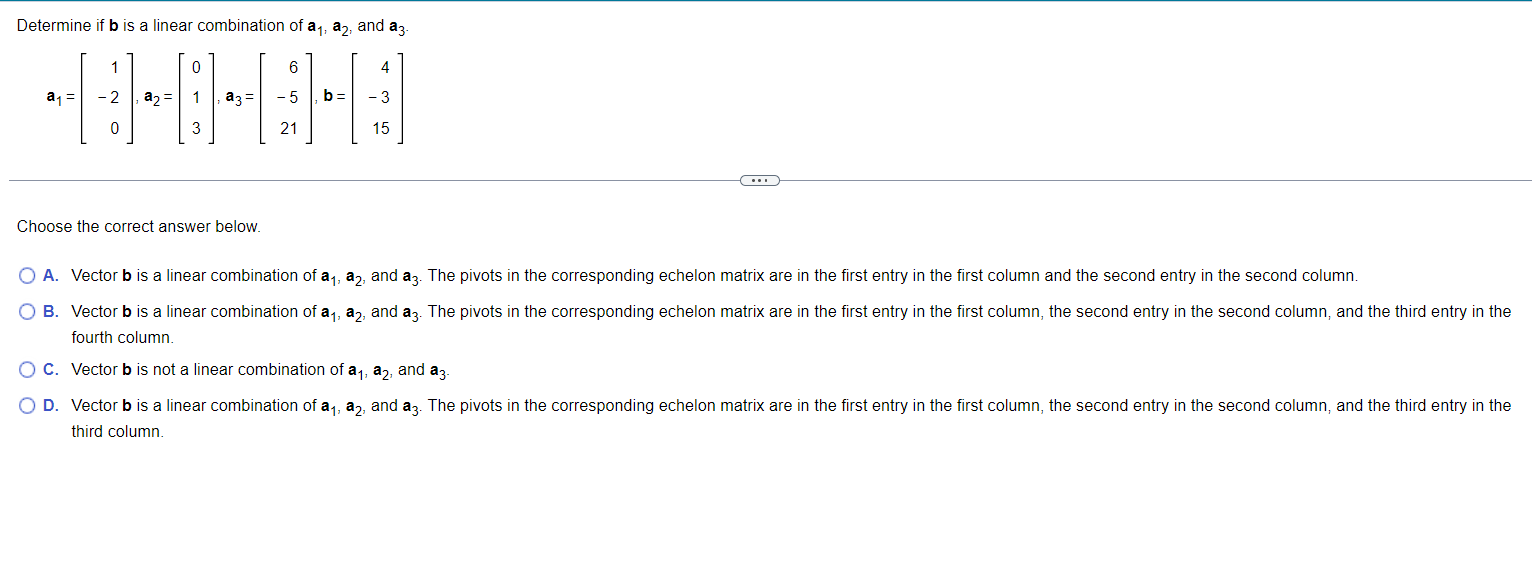Home /
Expert Answers /
Algebra /
determine-if-mathbf-b-is-a-linear-combination-of-mathbf-a-1-mathbf-a-2-and-pa232
(Solved): Determine if \( \mathbf{b} \) is a linear combination of \( \mathbf{a}_{1}, \mathbf{a}_{2} \), and ...
Determine if \( \mathbf{b} \) is a linear combination of \( \mathbf{a}_{1}, \mathbf{a}_{2} \), and \( \mathbf{a}_{3} \) \[ \mathbf{a}_{1}=\left[\begin{array}{r} 1 \\ -2 \\ 0 \end{array}\right], \mathbf{a}_{2}=\left[\begin{array}{l} 0 \\ 1 \\ 3 \end{array}\right], \mathbf{a}_{3}=\left[\begin{array}{r} 6 \\ -5 \\ 21 \end{array}\right], \mathbf{b}=\left[\begin{array}{r} 4 \\ -3 \\ 15 \end{array}\right] \] Choose the correct answer below. A. Vector \( \mathbf{b} \) is a linear combination of \( \mathbf{a}_{1}, \mathbf{a}_{2} \), and \( \mathbf{a}_{3} \). The pivots in the corresponding echelon matrix are in the first entry in the first column and the second entry in the second column. B. Vector \( \mathbf{b} \) is a linear combination of \( \mathbf{a}_{1}, \mathbf{a}_{2} \), and \( \mathbf{a}_{3} \). The pivots in the corresponding echelon matrix are in the first entry in the first column, the second entry in the second column, and the third entry in the fourth column. C. Vector \( \mathbf{b} \) is not a linear combination of \( \mathbf{a}_{1}, \mathbf{a}_{2} \), and \( \mathbf{a}_{3} \). D. Vector \( \mathbf{b} \) is a linear combination of \( \mathbf{a}_{1}, \mathbf{a}_{2} \), and \( \mathbf{a}_{3} \). The pivots in the corresponding echelon matrix are in the first entry in the first column, the second entry in the second column, and the third entry in the third column.
